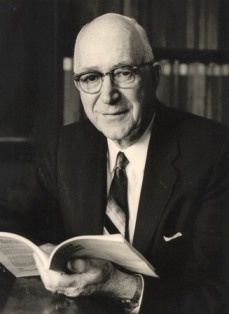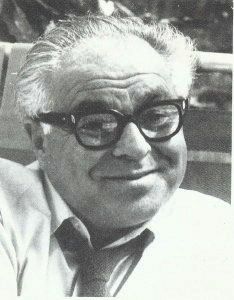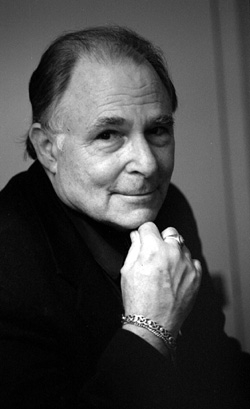The Naked Face: More than Meets the Eye
Historical Background
The question of whether or not facial expressions are universal or a cultural invention dates back more than 100 years and still continues to this day.
The Naked Face: More than Meets the Eye
Historical Background
The question of whether or not facial expressions are universal or a cultural invention dates back more than 100 years and still continues to this day.
Guillaume Duchenne
Guillaume Duchenne was a 19th century French neurologist, whose research involving nerve conduction tests and resulting understanding of the conductivity of neural pathways greatly advanced the science of electrophysiology. One of his interests was the human face and how its muscles produce facial expressions; expressions that he thought were directly linked to the soul. His description of the muscles responsible for particular changes in facial appearance provided the groundwork for those who measure facial behavior today (Ekman, 1990). Another of Duchenne's discoveries, which Darwin considered one of his major contributions, was that some facial movements are very difficult to make voluntarily: "The emotion of frank joy is expressed on the face by the combined contraction of m. zygomaticus major and the inferior part of m. orbicularis oculi. The first obeys the will, but the second (the muscle of kindness, of love, and of agreeable impressions) is only put in play by the sweet emotions of the soul. Finally, fake joy, the deceitful laugh, cannot provoke the contraction of this latter muscle (Ekman, 1990, p. 275)."
Guillaume Duchenne
Guillaume Duchenne was a 19th century French neurologist, whose research involving nerve conduction tests and resulting understanding of the conductivity of neural pathways greatly advanced the science of electrophysiology. One of his interests was the human face and how its muscles produce facial expressions; expressions that he thought were directly linked to the soul. His description of the muscles responsible for particular changes in facial appearance provided the groundwork for those who measure facial behavior today (Ekman, 1990). Another of Duchenne's discoveries, which Darwin considered one of his major contributions, was that some facial movements are very difficult to make voluntarily: "The emotion of frank joy is expressed on the face by the combined contraction of m. zygomaticus major and the inferior part of m. orbicularis oculi. The first obeys the will, but the second (the muscle of kindness, of love, and of agreeable impressions) is only put in play by the sweet emotions of the soul. Finally, fake joy, the deceitful laugh, cannot provoke the contraction of this latter muscle (Ekman, 1990, p. 275)."
Charles Darwin
Charles Darwin was one of the first to point out the significance of nonverbal communication and proposed universal facial expressions of emotion on the basis of his evolutionary theory (Ekman, 1970). In his book, "The Expression of the Emotions in Man and Animals" he describes why emotions are expressed the way they are, by referring to three principles: The principle of serviceable habits (useful expressive "habits" are inherited by offspring), the principle of antithesis (concerned with why expressions look the way they do) and the principle of the direct action of the excited nervous system on the body (facial expressions as an outlet for the nervous system to discharge excess nervous energy) (Hess & Thibault, 2009). With the help of these principles, Darwin defended the notion that emotion expressions are evolved and adaptive, serving an important communicative function (Darwin, 1965).
Charles Darwin
Charles Darwin was one of the first to point out the significance of nonverbal communication and proposed universal facial expressions of emotion on the basis of his evolutionary theory (Ekman, 1970). In his book, "The Expression of the Emotions in Man and Animals" he describes why emotions are expressed the way they are, by referring to three principles: The principle of serviceable habits (useful expressive "habits" are inherited by offspring), the principle of antithesis (concerned with why expressions look the way they do) and the principle of the direct action of the excited nervous system on the body (facial expressions as an outlet for the nervous system to discharge excess nervous energy) (Hess & Thibault, 2009). With the help of these principles, Darwin defended the notion that emotion expressions are evolved and adaptive, serving an important communicative function (Darwin, 1965).
bk
Floyd & Gordon Allport
Floyd Allport (around 1924), and later his brother Gordon Allport also spent considerable time exploring facial expressions, focusing on its importance in interpersonal communication and person perception. Gordon Allport (1961) wrote, "For all its elusiveness, the expressive manner and style of the other is an important (perhaps the most important) factor in ... person perception (p. 491)."
bk
Floyd & Gordon Allport
Floyd Allport (around 1924), and later his brother Gordon Allport also spent considerable time exploring facial expressions, focusing on its importance in interpersonal communication and person perception. Gordon Allport (1961) wrote, "For all its elusiveness, the expressive manner and style of the other is an important (perhaps the most important) factor in ... person perception (p. 491)."
Silvan Tomkins
In the article "Reading facial expressions of emotion" (2011), Matsumoto and Hwang mention that Darwin's claims were resurrected by Tomkins (1962, 1963), who believed that emotion is the basis of human motivation. Tomkins was one of the first to experimentally demonstrate that facial expressions are reliably associated with certain emotional states (Tomkins & McCarter, 1964) and he suggested that the seat of emotion is in the face.
Additionally, and despite conventional wisdom at the time, which held that expressions are culturally determined, Tomkins believed that there is a common set of rules that governs facial expression. This statement had a profound effect on Paul Ekman, who was then a young psychologist, fresh out of graduate school and interested in studying faces (Gladwell, 2005).
Silvan Tomkins
In the article "Reading facial expressions of emotion" (2011), Matsumoto and Hwang mention that Darwin's claims were resurrected by Tomkins (1962, 1963), who believed that emotion is the basis of human motivation. Tomkins was one of the first to experimentally demonstrate that facial expressions are reliably associated with certain emotional states (Tomkins & McCarter, 1964) and he suggested that the seat of emotion is in the face.
Additionally, and despite conventional wisdom at the time, which held that expressions are culturally determined, Tomkins believed that there is a common set of rules that governs facial expression. This statement had a profound effect on Paul Ekman, who was then a young psychologist, fresh out of graduate school and interested in studying faces (Gladwell, 2005).
Paul Ekman
In the 1960's, Paul Ekman, inerested in finding out the truth, travelled to Japan, Brazil and Argentina and visited remote tribes in the jungles of the Far East (Gladwell, 2005). He carried with him photographs of men and women making a variety of distinctive faces, asking people what they thought the expressions meant. Results indicated high cross-cultural agreement in judgments of emotions in faces by people in both literate and preliterate cultures.
Additionally, Ekman studied hundred thousand feet of film that had been shot in the remote jungles os Papua New Guinea, by virologist Carleton Gajdusek (Gladwell, 2005). For months, Ekman and his partner, Wallace Friesen, sorted through the footage, studying close-ups of the faces of the tribesmen in order to compare facial expressions of various groups (Gladwell, 2005). What they ended up with was a taxonomy of facial expressions or an 'atlas of emotions' with exact descriptions of more than 10,000 expressions.
His seminal research and resulting in-depth knowledge of facial expressions has gained him a reputation as the "best human lie detector in the world."
In addition to his research on the universality of facial expressions across cultures, Ekman is also known for his discovery of "micro-expressions."
Paul Ekman
In the 1960's, Paul Ekman, inerested in finding out the truth, travelled to Japan, Brazil and Argentina and visited remote tribes in the jungles of the Far East (Gladwell, 2005). He carried with him photographs of men and women making a variety of distinctive faces, asking people what they thought the expressions meant. Results indicated high cross-cultural agreement in judgments of emotions in faces by people in both literate and preliterate cultures.
Additionally, Ekman studied hundred thousand feet of film that had been shot in the remote jungles os Papua New Guinea, by virologist Carleton Gajdusek (Gladwell, 2005). For months, Ekman and his partner, Wallace Friesen, sorted through the footage, studying close-ups of the faces of the tribesmen in order to compare facial expressions of various groups (Gladwell, 2005). What they ended up with was a taxonomy of facial expressions or an 'atlas of emotions' with exact descriptions of more than 10,000 expressions.
His seminal research and resulting in-depth knowledge of facial expressions has gained him a reputation as the "best human lie detector in the world."
In addition to his research on the universality of facial expressions across cultures, Ekman is also known for his discovery of "micro-expressions."
-
Login:
-
(Logout)
More Than Meets the Eye






